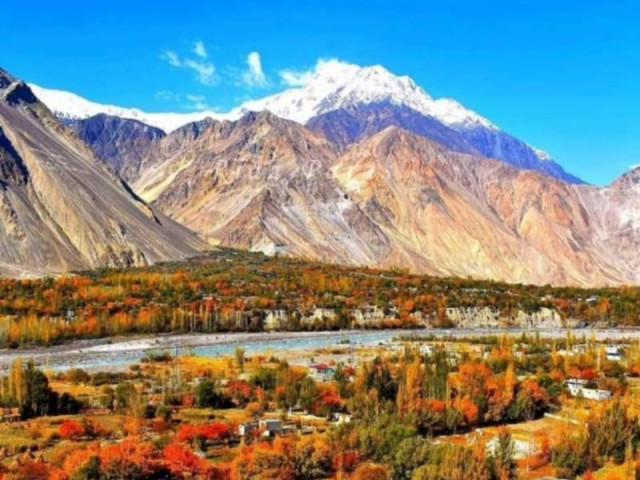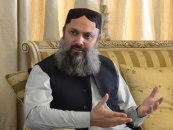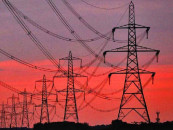Creative economy of Gilgit-Baltistan
People of region need to be given opportunities to play constructive role in creative industries

Gilgit-Baltistan (G-B) has been witnessing an unprecedented increase in local tourists from different regions of Pakistan.
This can be attributed to the rhetoric promoting tourism in the region adopted by the government. Furthermore, in the peak season, the social media is flooded with photos and videos showing grandiosity of G-B’s mountain peaks, natural beauty of its numerous valleys and serenity of its lakes. The downside to this narrative is the tacit understanding that G-B has no other option but to rely on tourism for economic activity.
In fact, the Covid19 has severely impacted income opportunities for the sub-regions of G-B solely relying on tourism. Further, there is little discussion on the environmental effects of tourism on the region’s people, cultures and natural ecosystem. Thus, there is a need for economic diversification. The talent and creativity of the people of G-B warrants its re-envisioning as a creative economy. A creative economy appreciates the role of ideas, creative abilities of people, design and art in steering economic activity.
According to the United Nations Conference on Trade and Development (Unctad), the creative industries include “advertising, architecture, arts and crafts, design, fashion, film, video, photography, music, performing arts, publishing, research and development, software, computer games, electronic publishing and TV/radio.” People of G-B need to be given opportunities to play a constructive role in these fields. A few glimpses of the creativity of the region’s people are presented in this article as many may not have witnessed it.
The Special Communication Organisation (SCO) has recently established Software Technology Park in Gilgit in partnership with the Pakistan Software Export Board and set up an incubation centre at Karakorum International University, Gilgit. High-speed internet provided at these two centres has triggered a wave of digital entrepreneurship in Gilgit.
For instance, Zahra Nooreen is now leading “SheDev”, which has a workforce comprising 40 women. Similarly, Shaan Khan’s uConnect has employed over 50 young IT professionals, many of whom were trained by Shaan himself. On the other hand, professionals like Arifah Esar, who is working with a media company based in the US, must move to Islamabad to access good quality internet.
I am familiar with many such talented IT professionals from G-B, who are struggling due to the lack of good quality internet access in the region. Almost every art school in Pakistan has students from G-B and many of them go on to do amazing work in the fields of architecture and design. The local architecture and design of G-B has tremendous potential for promotion. For instance, Aqeela Bano is running a furniture company with all women carpenters.
Such design-oriented businesses have a great potential for diversifying G-B’s economy. Local artists of G-B also do not get much attention in the mainstream media. Unfortunately, the media space is currently occupied by G-B’s mountains instead of people living there. G-B’s gems and jewellery are an area which gets traction in Pakistan’s domestic and international trade policies.
However, this industry needs support in terms of technology, skill development and marketing. Finally, the local community has a good skillset for the development of polo equipment and this could be encouraged. Faridoon is a shepherd and a polo enthusiast of Ishkoman Valley, Ghizer. He has been developing polo equipment for his team with great enthusiasm.
G-B is rich in terms of linguistic diversity. Nine languages are spoken in Immit Village of Ishkoman Valley. Almost every person of this village can speak five to six languages. This is an interesting area of research for linguistic scholars. Each valley of G-B is diverse in some way, which should invite interest in the study of culture, heritage and history of the region. For instance, people could study and document local folklores and poetry.
Recently, I met the literary community in Chatorkhand (Ghizer) and Shigar. They are doing excellent work on poetry and history. What needs to be done? Many of the areas of G-B struggle for basic amenities such as education, healthcare, water, road connectivity and internet access. For comparison, the estimated cost of Lai Expressway in Rawalpindi (ie Rs70 billion) is higher than the total development budget of G-B.
Thus, there is a need to enhance public investment in G-B to increase access to basic amenities. Furthermore, immediate attention needs to be given to skill training. Funding constraints for the government and the pitfalls of PC-1 mode of public investment may not allow high-quality skill training in G-B.
Therefore, there is a need to develop innovative and cost-effective partnerships for promoting skill development in the region. The Agha Khan Development Network has already demonstrated the potential of engaging communities in economic development and heritage conservation initiatives in G-B.
There is a need to build upon such initiatives through local startups. However, the key to opening the vistas of creative economy in G-B lies in access to high quality internet. The youth of the region can then do miracles to diversify the economy beyond tourism.
THE WRITER IS A PUBLIC POLICY ADVISER AND RESEARCHER HAVING INTEREST IN PUBLIC SECTOR GOVERNANCE, CITIES AND ENTREPRENEURSHIP



















COMMENTS
Comments are moderated and generally will be posted if they are on-topic and not abusive.
For more information, please see our Comments FAQ